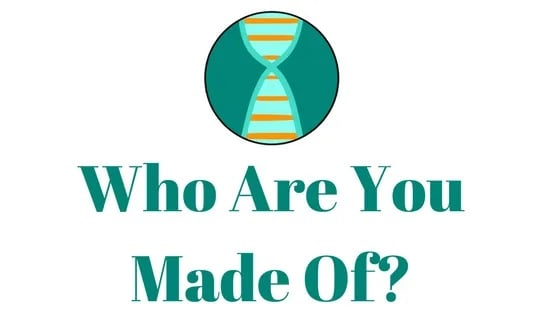If you are one of the many millions of people who have tested their DNA with Ancestry, you might have seen your results change over the years. In this post, learn about the big changes through examples.
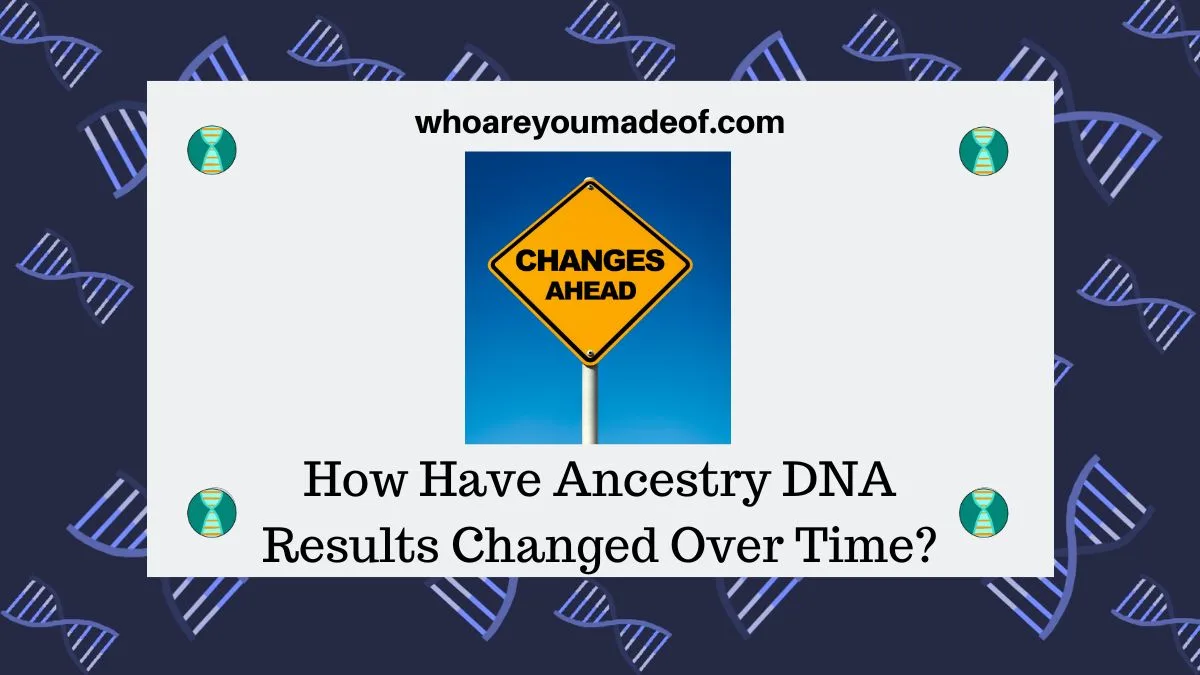
Ethnicity or ancestry estimates are usually the main reason that people take a DNA test. They are hoping to see an easy-to-understand chart telling them where their ancestors lived.
People often say that they are going to test their DNA to see "what they are".
This means that when people see their results, they might get pretty attached to what the results say. People experience a variety of emotions when technology improves and results change - even slightly.
Even though I have been learning and writing about DNA for almost nine years at this point, I have found myself both disappointed or excited about the appearance/disappearance of certain regions from my results.
The first results were very general
When Ancestry first began offering autosomal DNA testing in 2012, the results were very general. If you had tested your DNA in the early years and you were of primarily European heritage, you could have expected your results to tell you the part of the European continent from which your ancestors likely came.
If you had African, Asian, or indigenous North or South American ancestry, your ethnicity estimate was even more general, with some users receiving an entire continent as a region on their results.
Some of the regions reported on early Ancestry DNA results were Scandianvian, British Isles, Eastern European, European Jewish, Central European, West Africa, and Finnish/Volga,Ural.
If you have some of these very early results, you may remember that a substantial portion of your DNA ethnicity estimate was "Uncertain". The technology and science behind DNA testing for Ancestry was brand-new during this period, which is why the results were very general.
It was during this time period that people began saying that "ethnicity estimates are accurate at the continent level", meaning that if you showed any region in Africa, Europe, Asia, etc, you could be sure that you had ancestors who lived on that continent. You could be less sure about the specific region reported on the results (i.e. Central vs. Eastern European).
This advice, for the most part, is still true.
I don't have personal results to show you from this time because I first tested my DNA with Ancestry in 2015.
The Ethnicity Estimate used to include "trace regions"
Regions available on DNA results in 2015 were more specific than in the early years, as Ancestry attempted to deliver more refined results. We also saw a section dedicated to "trace regions".
People were very excited at this time to see Great Britain and Ireland separated into their own regions. If you have ancestry from these areas, you know that it is a point of pride to be either Irish, Scottish, English, etc.
Of course, Wales was still overlooked!
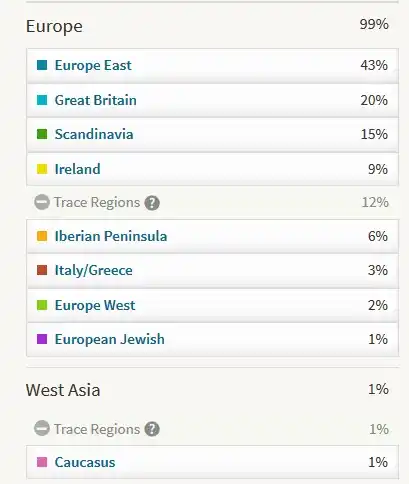
Trace regions were reported under the continent heading where they were located. When I first did my DNA, my results showed that I had DNA matching the Caucasus region.
The meaning of trace regions was simply that you may have had a tiny amount of DNA matching these regions. Many times, these regions were surprising to the test taker and of great interest.
The trace regions gave way to "low confidence" regions
During 2016-2017, we saw trace regions renamed to "low confidence regions", which was perhaps a more accurate way of describing them. Ancestry was letting us know that while our DNA might match these regions, they weren't very confident about it.
2017 also happens to be when I started this website and began writing articles about genealogy and DNA results.
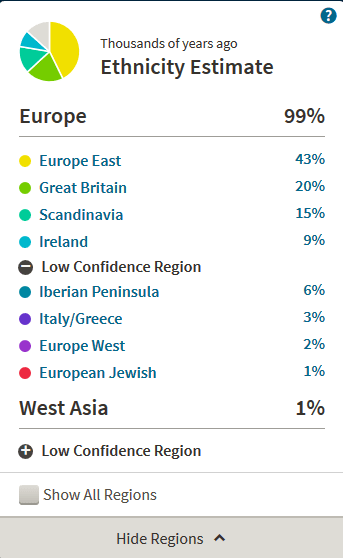
Many people were interested in the Iberian Peninsula DNA region at this time because it showed up for a lot of people who had assumed that their ancestors were generally from the British Isles or Ireland part of Europe.
This was very common for people with colonial ancestry, and it inspired me to write an article explaining why I thought it was possible, and even likely, that people with colonial US ancestry had lots of DNA matching the Iberian Peninsula region.
Low confidence regions disappear and more specific regions are added
The big change in 2018 was that the low confidence regions were removed from our results and more specific European regions were added. This is the year that we saw Germanic Europe appear and Iberian Peninsula disappear.
Beginning in 2018, we were also able to see whether our results had been updated to ensure we were viewing the most recent version.
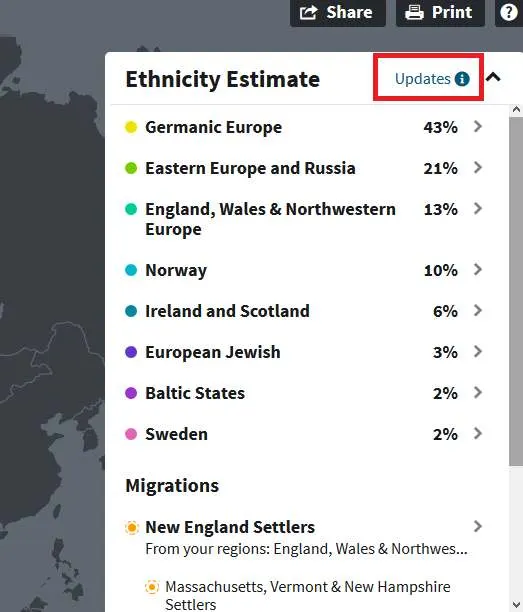
Unfortunately, it seems like people were confused and sometimes upset by the low confidence regions. This may have been why they were removed and we now only see regions that the Ancestry algorithm is more confident about.
I'm sure that I am not the only person who enjoyed seeing these less likely, but still possible, regions on my results. There is still a way to see them, if you have an Ancestry subscription, but this is a topic for another article.
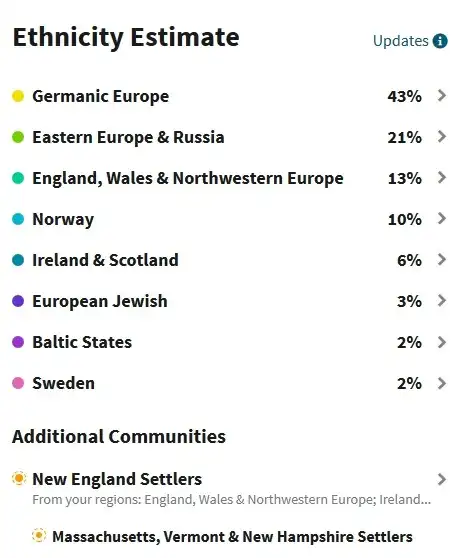
Some of the regions that disappeared are the Caucasus and the Iberian Peninsula. If people have more recent ancestry from the Caucasus, it may have been replaced by the Turkey and the Caucasus region at this time.
It seems like any ancestry that I may have from the Caucasus region may have been through an ancestor in Eastern or Central Europe that may have had ancestry in Western Asia. I have recently discovered that one of my German ancestors living in what is now Poland during the 19th century had an Iranian surname.
This is also when my mother's Southeastern Bantu disappeared! I would be interested to know if this happened to anyone else, as I have always worked on the assumption that it was real, but just a small amount.
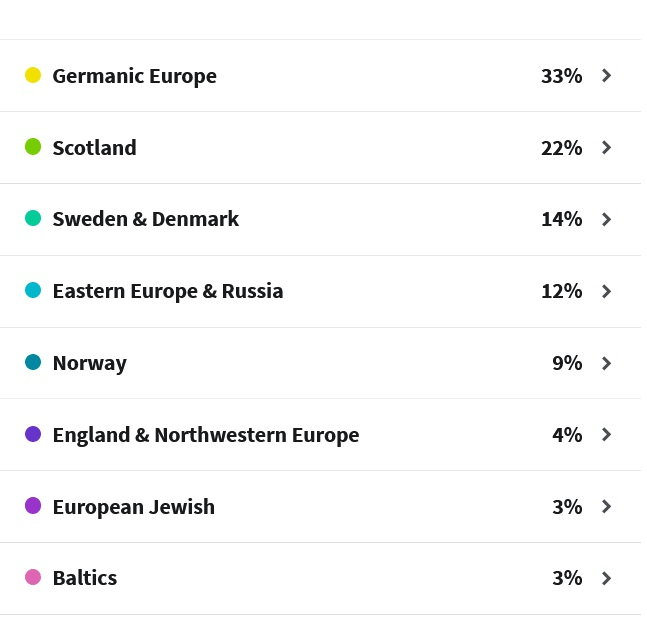
During the period between 2021, we didn't see large changes in the names of European regions, since they were already much more specific than most of the regions on other continents.
What we did see, however, is more specific regions and sub-regions added for other parts of the world. For example, the results updated in 2020 below (from my husband ) showed that his indigenous ancestry is from a specific part of Mexico covering five Mexican states.

My husband did have the Turkey and the Caucasus region on his updated results, but we still don't know exactly how he inherited DNA matching this part of the world.
Wales gets its own region and more European subregions appear
It was exciting to see my mother's Slovak ancestors represented on my DNA results in 2022. I received "Eastern Czechia", with a more specific Western Slovakia, on my results this year.
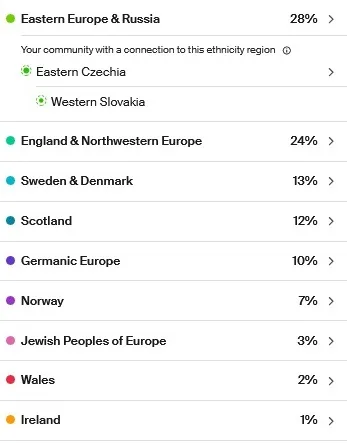
For the 2023 updated Ancestry DNA results, we learned that they were calculated using more than 116,800 reference samples and these were compared with more than 3000 regions and DNA Communities from around the world.

The Ancestral Regions estimate arrives, and sub-regions and communities are now Journeys
With the 2024 Ancestry update, we saw 24 new ancestral regions added to the list of places that could possibly show up on our results. This included several regions in Africa, Asia, West Asia, and Europe, which provided a lot more detail for Ancestry customers.
One of the most notable changes in Ancestry results in 2024 was the change in language around the ethnicity estimate. The ethnicity estimate was rebranded as an ancestral regions report, which better matches what an ethnicity estimate actually is.
For example, on my results from this year, it shows that 15% of my DNA matches Denmark. To be honest, I know very little about Denmark and don't identify at all as Danish, so to describe it as "one of my ethnicities" seems odd.
I definitely like using "ancestral regions", as it describes it better.
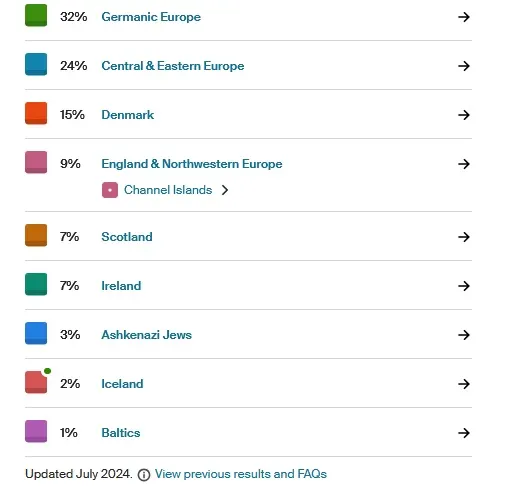
My results this year saw a new region added that had now shown up before: Iceland. As far as I know, I don't have any ancestors from Iceland.
Unfortunately, neither of my parents received Iceland on their results. This leads me to believe that my Iceland results may be some of my parents' Scandinavian ancestry showing up incorrectly for me.
Alternatively, one of my parents could have Icelandic ancestry that incorrectly shows up as a Scandinavian country. Another thing to add to my never-ending list of things to try to find out!
Another big change this year is the layout of the results. Since our results are becoming more specific and are including more information each year, Ancestry has stopped trying to put everything in a neat little list.
Now, we can click on each region to see more details. We can also see more specific sub-regions or migrations that we match by clicking on the Journeys tab.
The arrival of macro-regions
The Ancestry 2025 update was released in October 2025. The biggest visible change to results this year was a brand-new format to results due to the use of macro-regions to categorize our regions.
Our DNA results are now organized by larger regions called macro-groups that are supposed to be more "stable". I assume this to mean that our macro-regions are not likely to change often, yet we might see the regions within the larger groups change as results become more specific and accurate.
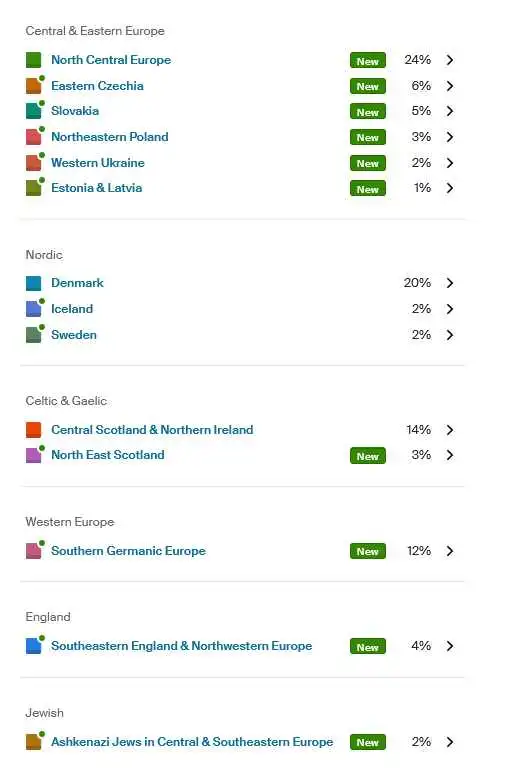
Behind the scenes, we saw a big change this year due to the way that reference panels are created. Reference panels are created using DNA samples from people with ancestry in regions around the world to compare with our DNA.
Ancestry designed a new process for creating reference panels that, to a large extent, eliminated the need for every DNA sample to also have family tree information attached to it to be included in the sample group. This meant that more DNA samples could be used to create the reference panel, and more accurate results could be obtained.
Conclusion
I hope you enjoyed this walk down memory lane (or a change log!) for how Ancestry results have changed over the years. My intention with this article is to keep a record of how my results have changed, and not to be an in-depth article about each year's changes.
If your Ancestry results have changed over the years and there are regions that you miss or wonder about, or that have shown up for you all of the sudden, I would love to hear from you in the discussion below.
Thanks for reading today!
